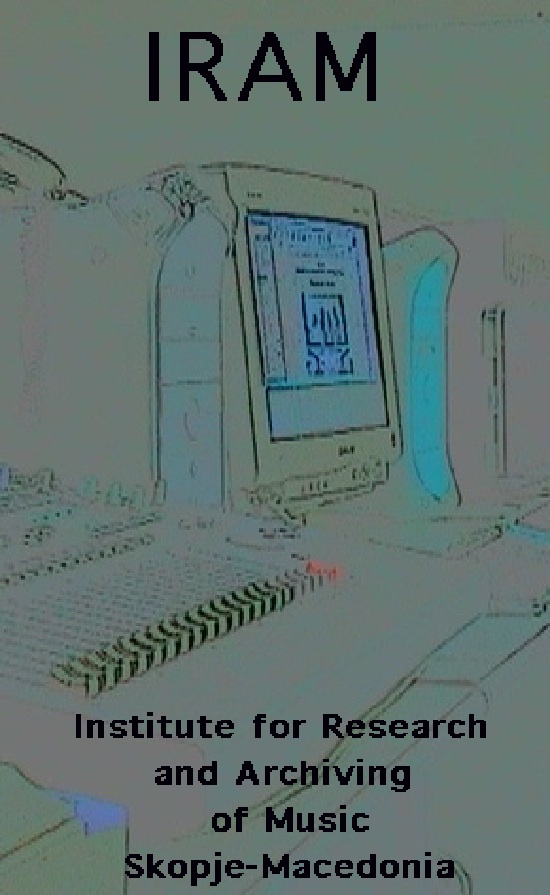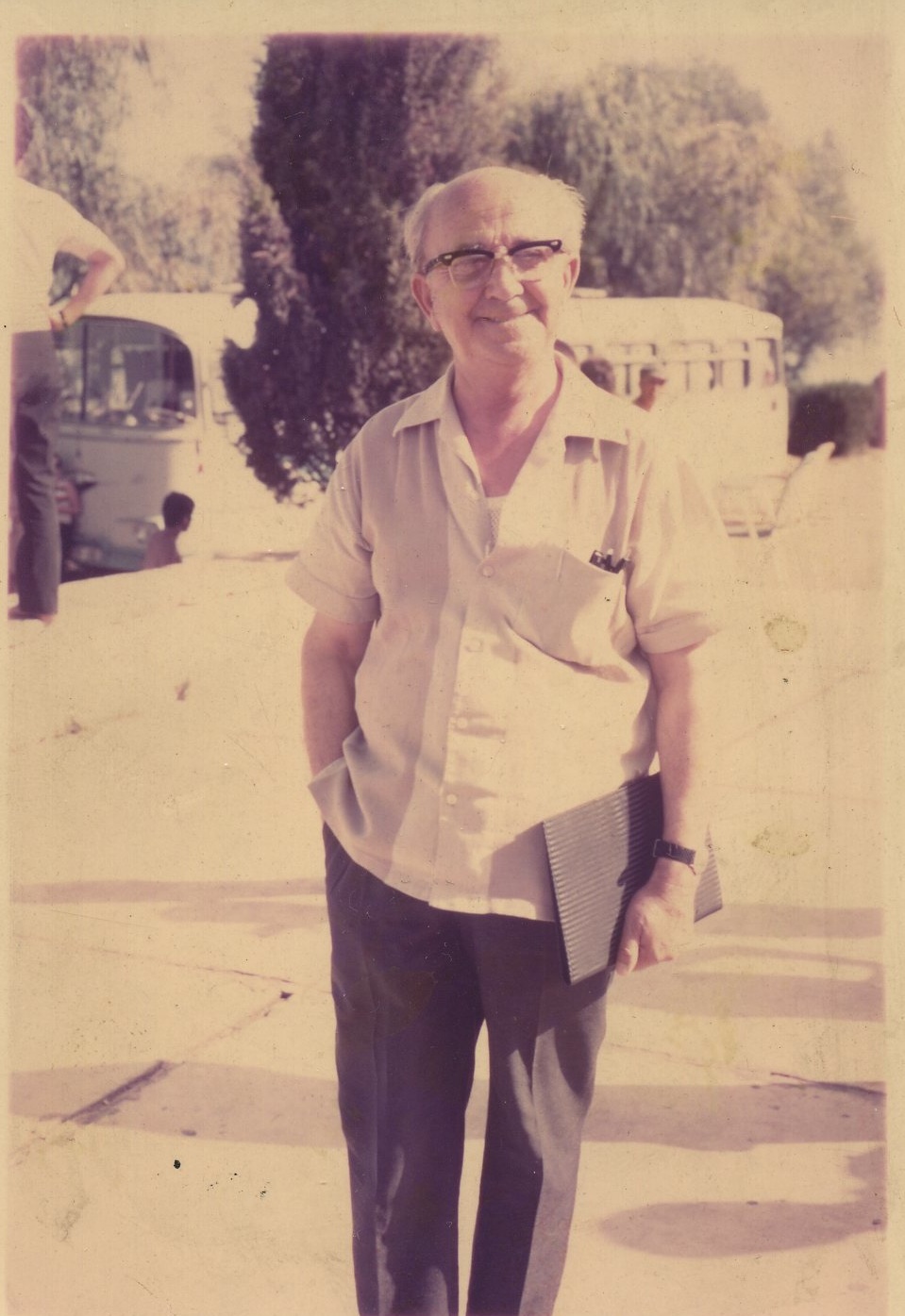 |
IRAM
Editions Connecting Zivko Firfov's audio and transcription collections CD ROM 1 |
 |
back to Start page |
Zivko Firfov (1906-1984) |
Intro
The central objective of the CD ROM 1 was to link
the
audio and transcription collections undertaken by the founder of
Macedonian ethnomusicology Zivko Firfov. The collections were digitized
in IRAM between 2001 and 2005. They consist of audio, scanned
transcriptions, Sibelius files with the score and lyrics, and two
digital catalogues with secondary data.
The first links among the collections were confirmed by Irena Mitevska Mileva’s research, who was responsible for most of the annotation of the Firfov audio collection, as well as the digitization and annotation of the Firfov transcription collection. Irena Mitevska Mileva’s four papers related to the subject - two in English and Macedonian alike - were presented at IRAM conferences and the defense of her Master thesis. They include:
- Zivko Firfov’s Transcriptions
- Comparison of Audio and Transcribed Materials from the Digitized Collections of Zivko Firfov at IRAM
- Analiza na distribucijata na sekundarni podatoci od bazata na podatoci za Kolekcijata Firfov
- Problemi na digitalizacija na melogrami
In the papers Mitevska Mileva points to 62 songs which overlap in both collections.
The CD ROM 1 includes 30 of them, based on a search of the first third of the transcription collection.
Unfortunately, Zivko Firfov did not leave much secondary data about the recorded and transcribed material. Still, the similarities confirm that Firfov used at least some parts of the recordings for the transcriptions. We can assume that Firfov made some changes based on his experience with the other variants of the same song. The interviews with some of the singers confirmed our assumption that the audio and transcription collections were used to produce scores for the folk ensembles of the Macedonian Radio. This process may have led to subtle changes in the transcriptions, in the form of alterations to words, notes and in some cases transpositions adequate to the performance abilities of the folk instruments, and particularly folk string instruments. This claim is further supported by the fact that some of the songs were recorded with an instrumental accompaniment during the rehearsals of the orchestras with the singers; six such examples have been included in this CD ROM. In addition to the songs, Firfov wrote the instrumental introduction, which provides yet more evidence for the argument that the transcriptions were used for this purpose.
Our main goal in producing this CD ROM was to open the possibilities for more thorough research of both collections in the future. We therefore tried to keep as much as possible of the original material intact: we did not use any noise reduction, as well as speed and harmonic corrections.
We noticed that there is a pattern of speed change related to all songs at the second side of the Cassette 36. The constant acceleration of speed from the beginning to the end of each song results in change of the pitch and ducking effect. This is enhanced at the end of the tape which altogether points to a hardware or power supply problem of the original equipment (Firfov used a Phillips cassette deck).
The CD ROM consists of three types of files: audio (AIFF 44.1 KHz/16 bit), scanned transcriptions (PDF) and Sibelius files with the scores and the lyrics (PDF). The Sibelius files are presented in Irena Mitevska Mileva’s version with some adjustments, such as additional metric signs, adjustment in the presentation of the lyrics, repeating and missing lyrics and so on. The design of the CD ROM with the adequate editing of the audio was undertaken by Trena Jordanoska. The order of the songs in this CD ROM corresponds to their appearance in the Transcription collection.
Our next step is to prepare the second CD ROM with the overlapping materials. Still, having in mind the number of the songs in both collections, we expect that future research will uncover additional songs with similarities in melody and lyrics.
Skopje, January 2010 Dimitrije Buzarovski
back to Start page
The first links among the collections were confirmed by Irena Mitevska Mileva’s research, who was responsible for most of the annotation of the Firfov audio collection, as well as the digitization and annotation of the Firfov transcription collection. Irena Mitevska Mileva’s four papers related to the subject - two in English and Macedonian alike - were presented at IRAM conferences and the defense of her Master thesis. They include:
- Zivko Firfov’s Transcriptions
- Comparison of Audio and Transcribed Materials from the Digitized Collections of Zivko Firfov at IRAM
- Analiza na distribucijata na sekundarni podatoci od bazata na podatoci za Kolekcijata Firfov
- Problemi na digitalizacija na melogrami
In the papers Mitevska Mileva points to 62 songs which overlap in both collections.
The CD ROM 1 includes 30 of them, based on a search of the first third of the transcription collection.
Unfortunately, Zivko Firfov did not leave much secondary data about the recorded and transcribed material. Still, the similarities confirm that Firfov used at least some parts of the recordings for the transcriptions. We can assume that Firfov made some changes based on his experience with the other variants of the same song. The interviews with some of the singers confirmed our assumption that the audio and transcription collections were used to produce scores for the folk ensembles of the Macedonian Radio. This process may have led to subtle changes in the transcriptions, in the form of alterations to words, notes and in some cases transpositions adequate to the performance abilities of the folk instruments, and particularly folk string instruments. This claim is further supported by the fact that some of the songs were recorded with an instrumental accompaniment during the rehearsals of the orchestras with the singers; six such examples have been included in this CD ROM. In addition to the songs, Firfov wrote the instrumental introduction, which provides yet more evidence for the argument that the transcriptions were used for this purpose.
Our main goal in producing this CD ROM was to open the possibilities for more thorough research of both collections in the future. We therefore tried to keep as much as possible of the original material intact: we did not use any noise reduction, as well as speed and harmonic corrections.
We noticed that there is a pattern of speed change related to all songs at the second side of the Cassette 36. The constant acceleration of speed from the beginning to the end of each song results in change of the pitch and ducking effect. This is enhanced at the end of the tape which altogether points to a hardware or power supply problem of the original equipment (Firfov used a Phillips cassette deck).
The CD ROM consists of three types of files: audio (AIFF 44.1 KHz/16 bit), scanned transcriptions (PDF) and Sibelius files with the scores and the lyrics (PDF). The Sibelius files are presented in Irena Mitevska Mileva’s version with some adjustments, such as additional metric signs, adjustment in the presentation of the lyrics, repeating and missing lyrics and so on. The design of the CD ROM with the adequate editing of the audio was undertaken by Trena Jordanoska. The order of the songs in this CD ROM corresponds to their appearance in the Transcription collection.
Our next step is to prepare the second CD ROM with the overlapping materials. Still, having in mind the number of the songs in both collections, we expect that future research will uncover additional songs with similarities in melody and lyrics.
Skopje, January 2010 Dimitrije Buzarovski
back to Start page